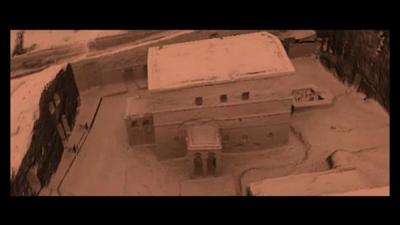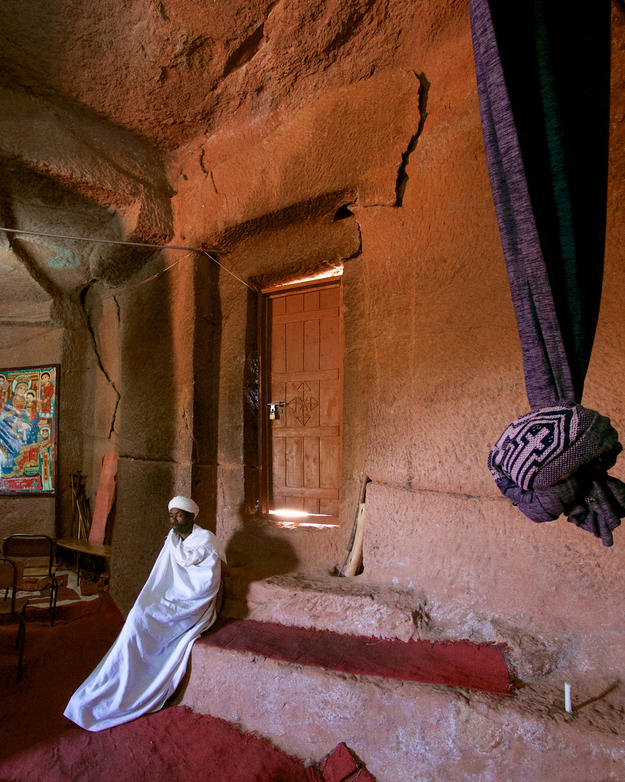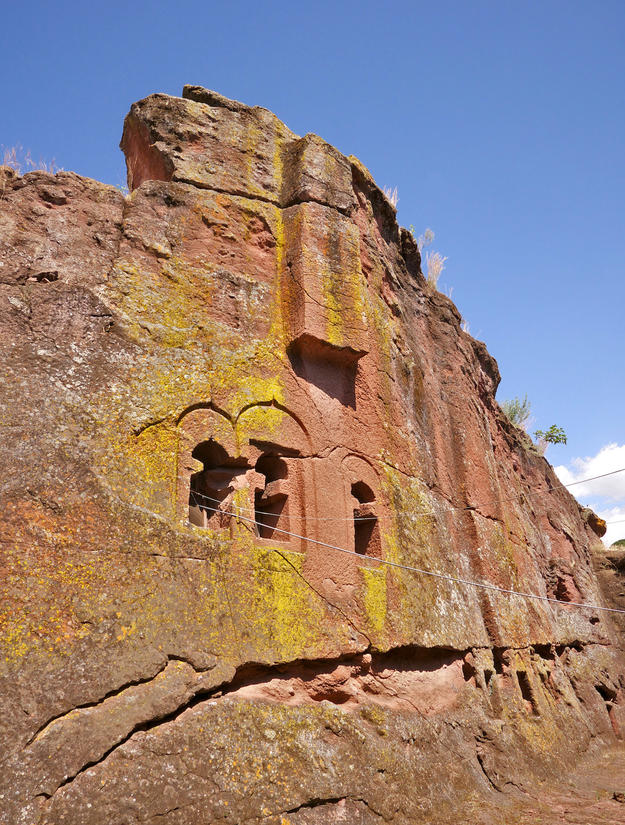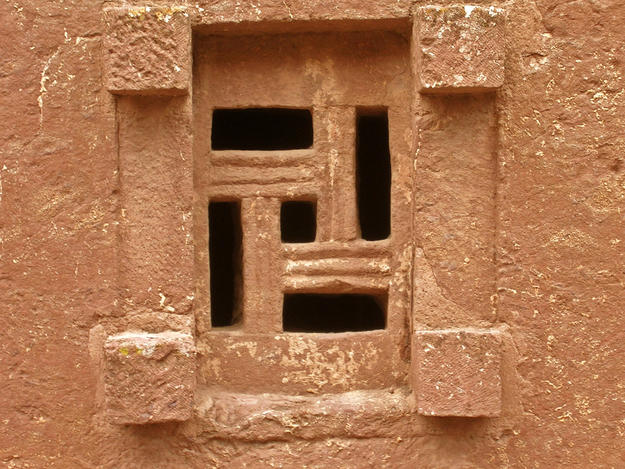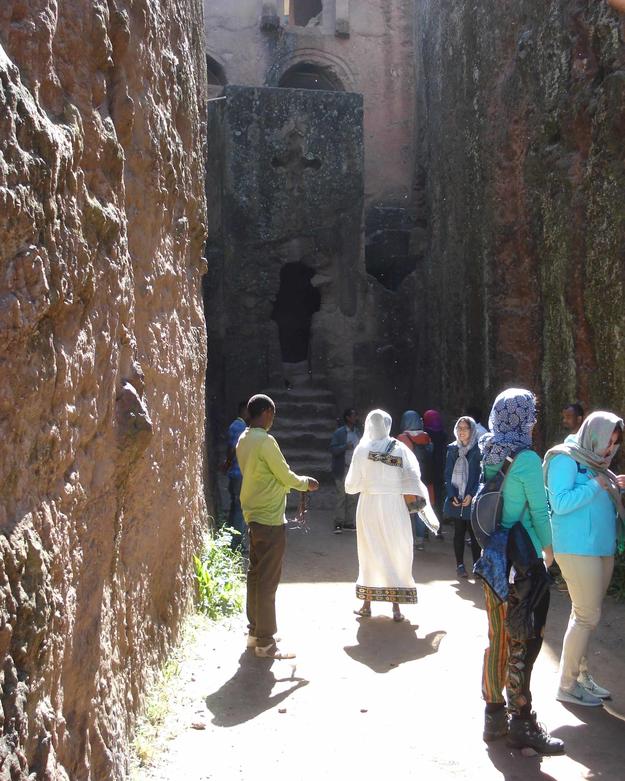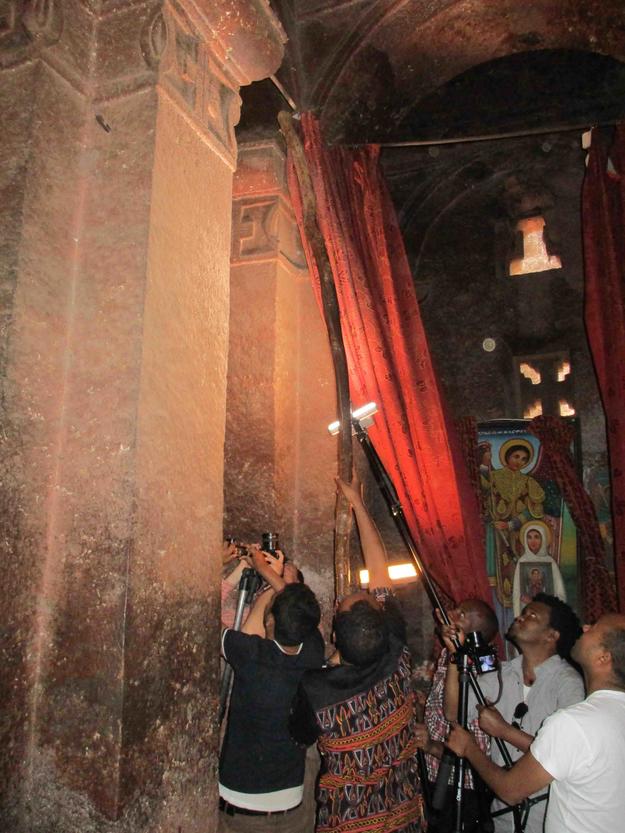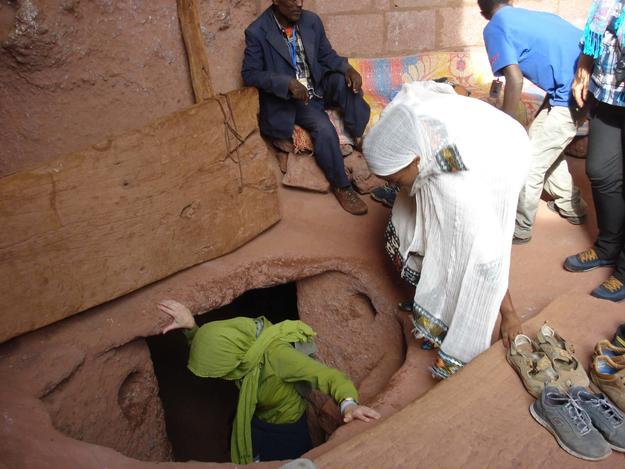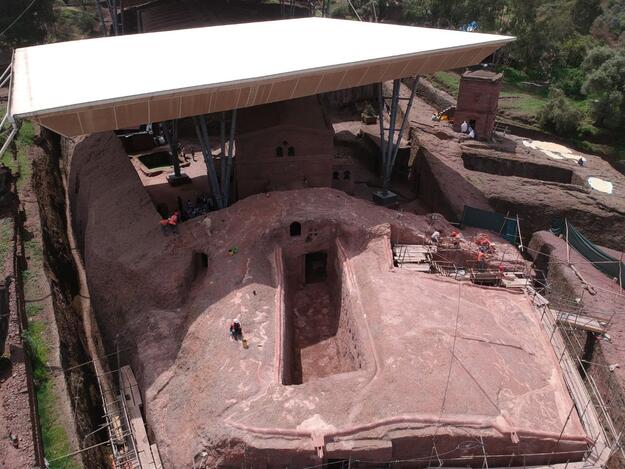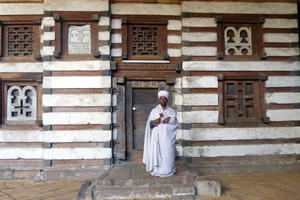Rock-Hewn Churches
The Rock-Hewn Churches of Lalibela
Lalibela is located approximately 370 miles (600 kilometers) north of Addis Ababa in the Amhara Region, situated at an altitude of 8,200 feet (2,500 meters). In its center lies a unique complex of 11 churches cut out of the living rock some 800 years ago. Their construction is attributed to King Lalibela (approximately 1181-1221), of the Zagwe dynasty, who attempted to create a new Jerusalem on African soil, accessible to all Ethiopians. Even the names of Lalibela’s features echo those of Jerusalem: the river Jordan, the church of Golgotha, and the Tomb of Adam. The churches are still used for daily worship and special ceremonies, receiving pilgrims and large crowds during holidays such as Christmas and Easter. The churches, inscribed on the World Heritage List in 1978, are sculpted out of solid volcanic rock and are often connected by long underground tunnels and trenches. The main cluster of 11 churches is divided in two groups: a northern group with five churches and an eastern group with another five, while Biet Gyorgis, perhaps the most famous, is an isolated church.
A Long and Successful Presence
In the 1960s, one of our first projects ever undertaken was at Lalibela. A team of Italian conservators documented the churches, undertook stabilization efforts, and worked to bring international attention to the importance and fragility of these extraordinary structures.
Since 2007, WMF and UNESCO have partnered to address the conservation of the site, its management, presentation, and the training of local personnel in sustainable conservation practices for the long-term maintenance of the site. Temporary modern shelters were constructed over four of the churches in 2007. Although these shelters keep rain off the churches they cover, they do nothing for the churches that remain uncovered. These shelters address only one of the problems affecting the site—damage caused by rainwater—and with their massive steel frames, they are highly intrusive. The objective of our program at Lalibela is to develop preservation solutions that can be applied across the entire site, which are effective, appropriate, and relevant to the context and problems, and which will make construction of more shelters unnecessary and eventually make the current ones redundant.
Beta Gabriel Rafael
WMF and UNESCO commenced work on a pilot project at one of the uncovered churches in most urgent need of preservation, Beta Gabriel Rafael, in 2009. Preparatory work, which included archival research, photogrammetry, structural analysis, condition assessment, and preparation of a conservation plan was completed in 2012. A training program was also implemented by us to develop building craft skills necessary to carry out preservation work.
In 2012, we were awarded a grant by the U.S. State Department's Ambassadors Fund for Cultural Preservation (AFCP) to implement the pilot preservation project at Beta Gabriel Rafael, and this was successfully completed in December 2015. Working with the Ethiopian Authority for Research and Conservation of Cultural Heritage (ARCCH), we undertook a comprehensive preservation program at the church. Crumbling stone on the exterior walls of the church has been preserved, and a new waterproof layer has been laid on the roof improving drainage, and preventing water from entering inside or cascading down its facades. Structural repairs have also been completed inside the building. Traditional, lime-based mortars were used for all preservation work, and the methodologies developed, which can be replicated across the site, have been recorded in technical guidelines.
Training was also an important component of the project, and a core group of craftspeople based in Lalibela were employed, working closely with our conservation expert. Additionally, in July 2016, sixteen students from New York’s Columbia University and Ethiopia’s Addis Ababa University participated in a field school at Lalibela.
The Twin Churches of Beta Golgotha & Mika’el
In 2016, we received a second grant from the AFCP to undertake work at the twin-churches of Beta Golgotha & Mika’el at Lalibela. This project made use of the same methodologies as those used for the conservation project at Beta Gabriel Rafael. An ongoing goal of the project was to create a sustainable framework for preservation at Lalibela, with skilled craftspeople and appropriate preservation techniques, which would ensure the site is preserved into the future.
Conservation work at the twin-churches finished in July 2018. The completion of the project was celebrated during an inauguration ceremony in November 2018.
World Monuments Fund’s work at Lalibela has been made possible, in part, by support from the U.S. Ambassadors Fund for Cultural Preservation (AFCP), the U.S. Embassy Addis Ababa, The J.M. Kaplan Fund, the Janet Wright Ketcham Foundation, and Tianaderrah Foundation / Nellie and Robert Gipson.
Videos

